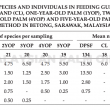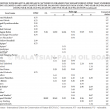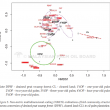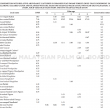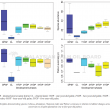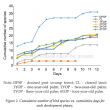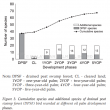Journal of Oil Palm Research Vol. 33 (4) December 2021, p. 617-628
BIRD SPECIES RICHNESS, ABUNDANCE AND THEIR FEEDING GUILD ACROSS OIL PALMS DEVELOPMENT THROUGH MIST-NETTING METHOD IN BETONG, SARAWAK
DOI: https://doi.org/10.21894/jopr.2021.0017
Received: 1 October 2020 Accepted: 2 February 2021 Published Online: 27 April 2021
There are a lot of studies comparing birds in oil palm plantation with forests and other crop ecosystems but less on bird across drained peat swamp forest converted to oil palm plantation. This study assessed the bird species richness, abundance and their feeding guild change throughout the oil palm development phases including drained peat swamp forest (DPSF), cleared land (CL), one-year-old palm (1YOP), two-year-old palm (2YOP), three-year-old palm (3YOP), four-year-old palm (4YOP) and five-year-old palm (5YOP). Sixty-seven species of bird were recorded across the development phases through mist-netting method, of which 35.8% were only recorded in DPSF, 19.4% of the DPSF bird species continued to be recorded after the forest conversion to oil palm plantation, and 44.8% of bird species were additional species from DPSF species, appearing following the planting of oil palm. Species richness of bird was significantly higher in DPSF than CL but similar level to those in oil palm plantation. Even though level of species richness in oil palm plantation was similar level to those in DPSF, Non-metric Multidimensional Scaling revealed that bird compositions were different according to the three grouping habitats; DPSF, CL and oil palm plantation. Species richness of insectivorous guild was ranked higher along the oil palm development phases. Species abundance of insectivorous was ranked higher at the early stage of development then omnivorous guild recorded abundant once the Yellow-vented Bulbul started to dominate oil palm of more than 2YOP. Good understanding on bird’s distribution change across the conversion of forest to oil palm development gives a better idea on how to minimise land disturbance during plantation operations.
KEYWORDS:FIGURES & TABLES:
1 Malaysian Palm Oil Board,
6 Persiaran Institusi, Bandar Baru Bangi,
43000 Kajang, Selangor, Malaysia.
2 Universiti Malaysia Sarawak,
Institute of Biodiversity and Environmental Conservation,
94300 Kota Samarahan, Sarawak, Malaysia.
* Corresponding author e-mail: bettycopa@mpob.gov.my
